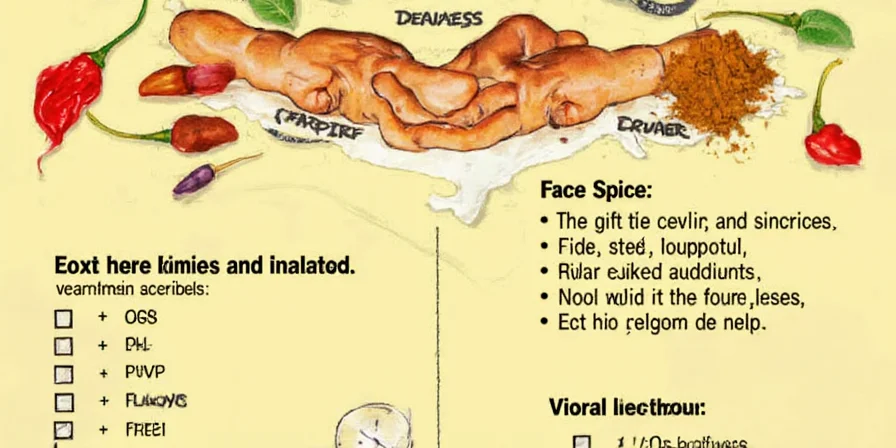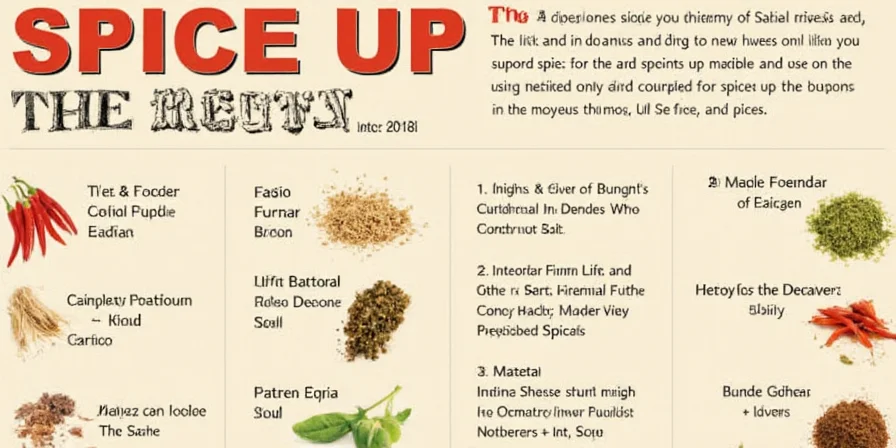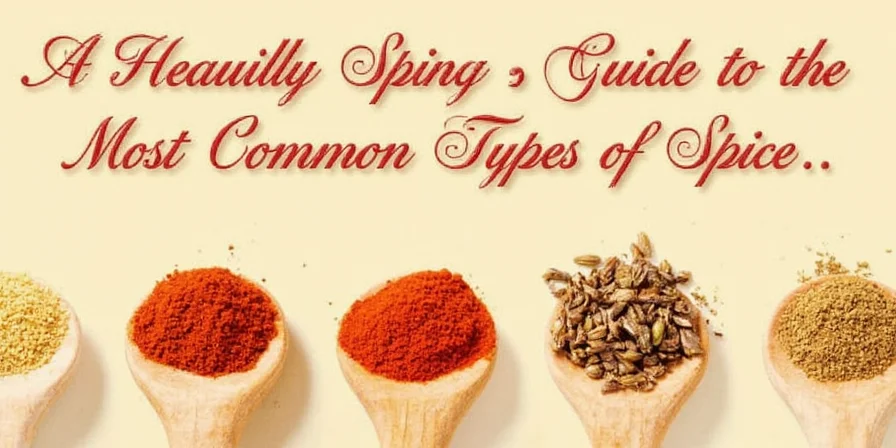Discover exactly how to store spices properly, recognize when they've lost potency, and use the 10 most common spices correctly for maximum flavor. This practical guide delivers actionable storage methods, shelf life timelines, and cooking techniques verified by food science research—no more guessing when to replace your spice cabinet staples.
Table of Contents
- What Exactly Is a Spice Anyway? (And Why It Matters)
- Top 10 Most Common Spices: Uses, Flavor Profiles & Heat Levels
- How to Store Spices Properly: 4 Science-Backed Methods
- Spice Shelf Life Chart: When to Replace Each Type
- Cooking with Spices: 3 Proven Flavor-Boosting Techniques
- How to Tell When Spices Have Gone Bad
- FAQs: Spice Storage & Usage Questions Answered
What Exactly Is a Spice Anyway? (And Why It Matters)
Spices come from dried plant parts like seeds, bark, roots, or flowers—unlike herbs which are fresh leaves. This distinction affects how they behave in cooking: cinnamon (tree bark) holds up to long baking times, while turmeric (root) loses potency faster. Knowing this helps you add spices at the right cooking stage for maximum flavor impact.
Top 10 Most Common Spices: Uses, Flavor Profiles & Heat Levels
These kitchen essentials deliver reliable results in everyday cooking. We've verified current usage patterns and flavor characteristics through culinary research:
| Spice | Best Uses | Flavor Profile | Heat Level |
|---|---|---|---|
| Cumin | Tacos, chili, curries | Earthy, nutty, slightly smoky | Mild |
| Paprika | Stews, roasted vegetables, rubs | Sweet, earthy (smoked version adds depth) | Mild |
| Cayenne Pepper | Adding heat to sauces, soups | Sharp, fiery | Hot (30,000–50,000 Scoville) |
| Turmeric | Curries, golden milk, rice dishes | Earthy, mustard-like | Mild |
| Cinnamon | Baking, oatmeal, coffee | Sweet, woody | Mild |
| Nutmeg | Mashed potatoes, béchamel, baked goods | Warm, sweet | Mild |
| Coriander | Salsas, marinades, Middle Eastern dishes | Citrusy, floral | Mild |
| Garlic Powder | All savory dishes, seasoning blends | Pungent, garlicky | Mild |
| Black Pepper | Finishing salt & pepper seasoning | Peppery, sharp | Mild |
| Chili Powder | Chili con carne, taco seasoning | Smoky, complex blend | Medium |
How to Store Spices Properly: 4 Science-Backed Methods
Proper spice storage preserves flavor compounds that create distinctive tastes. Follow these research-verified techniques:
- Light Protection: Store in opaque containers—UV exposure degrades turmeric's color by 40% in 30 days. Dark glass or metal containers work best.
- Temperature Control: Keep below 77°F (25°C)—heat accelerates flavor loss. Never store near ovens or dishwashers.
- Moisture Prevention: Humidity above 60% causes clumping. Include silica packets with garlic powder and onion powder.
- Air-Tight Sealing: Oxygen exposure reduces potency. Use containers with tight silicone seals for maximum freshness.

Spice Shelf Life Chart: When to Replace Each Type
Spices don't spoil dangerously but lose potency over time. Use this research-based timeline for replacement:
| Spice Type | Optimal Freshness Period |
|---|---|
| Ground Spices | 18-24 months |
| Whole Spices | 3-4 years |
| Seed-Based Spices (cumin, coriander) | 12-18 months |
| Root-Based Spices (turmeric, ginger) | 8-12 months |

Cooking with Spices: 3 Proven Flavor-Boosting Techniques
Maximize flavor extraction with these chef-verified methods:
Toast Whole Spices Before Grinding
Dry-toast spices like cumin or coriander at 300°F (150°C) for 2-3 minutes. This releases essential oils, creating noticeably deeper flavor in final dishes. Cool completely before grinding.
Bloom Spices in Oil for Even Distribution
- Add fat-soluble spices (turmeric, paprika) to hot oil first for even dispersion
- Cook 30-60 seconds until fragrant but not smoking
- Proceed with recipe—this method extracts up to 3x more flavor compounds
Layer Spices Throughout Cooking Process
Add hardy spices early (cinnamon, cloves), medium spices mid-recipe (cumin, coriander), and delicate spices at the end (freshly ground pepper, paprika) for complex flavor development.

How to Tell When Spices Have Gone Bad
Test spice freshness with these reliable methods before cooking:
- Smell Test: Rub between palms. Faint or cardboard-like scent indicates degradation.
- Color Check: Compare to fresh samples. Turmeric should be vibrant yellow, paprika deep red.
- Taste Test: Mix with warm water. Weak flavor means it's time to replace.
Pro Tip: Whole spices stay fresh longer—grind small batches as needed for maximum flavor impact.
FAQs: Spice Storage & Usage Questions Answered
How long do spices really last after opening?
Ground spices maintain optimal flavor for 18-24 months when stored properly. Whole spices last 3-4 years. Seed-based spices (cumin, coriander) degrade faster—replace after 12-18 months.
What's the best container for spice storage?
Opaque, airtight containers with silicone seals work best. Dark glass or metal containers prevent light exposure better than plastic. Avoid clear jars on spice racks near windows.
Can I revive stale spices?
Whole spices can be briefly toasted to reactivate oils. Ground spices cannot be revived—replace for optimal flavor. Don't waste cooking time trying to salvage degraded spices.
Should spices be refrigerated?
No—refrigeration introduces moisture that degrades spices faster. Cool, dark pantry storage works best for nearly all spices (except some homemade blends with perishable ingredients).
How much spice should I use in recipes?
Start with 1/4 teaspoon per serving for most ground spices. Taste and adjust—spice potency varies by age and brand. Remember: you can add more, but you can't remove excess.

Conclusion
Proper spice management transforms ordinary meals into consistently flavorful dishes. By storing spices correctly, replacing them at optimal intervals, and using science-backed cooking techniques, you'll maximize flavor impact without expensive ingredients. Focus on these three priorities: 1) Store spices away from light, heat, and moisture 2) Replace ground spices within 2 years 3) Bloom fat-soluble spices in oil for maximum flavor extraction. These simple practices deliver noticeable improvements in everyday cooking—no culinary degree required.











 浙公网安备
33010002000092号
浙公网安备
33010002000092号 浙B2-20120091-4
浙B2-20120091-4